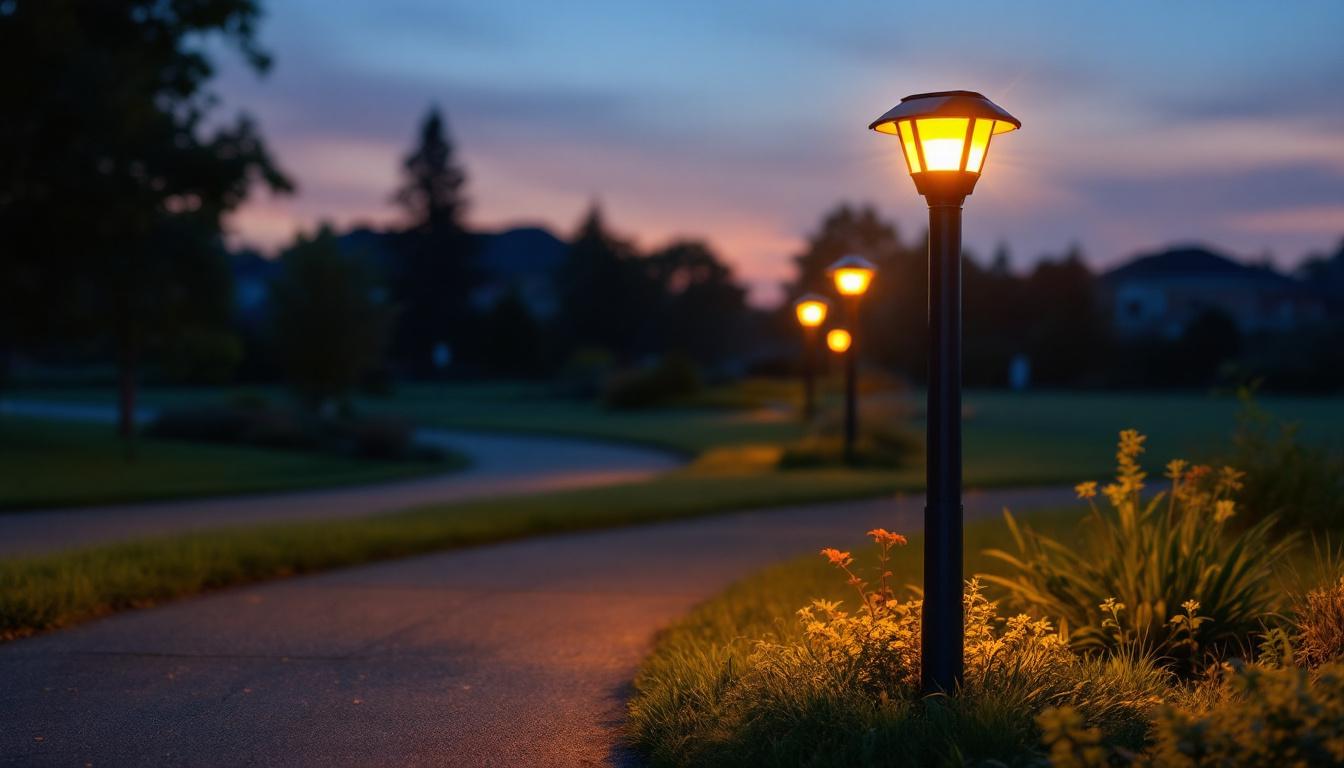
In the world of lighting design and installation, hanging light pendants have become a popular choice for both residential and commercial spaces. These fixtures not only serve a functional purpose but also enhance the aesthetic appeal of a room. However, as with any electrical installation, compliance with safety standards and regulations is paramount. For lighting contractors, understanding the nuances of compliance related to hanging light pendants is essential to ensure safety, functionality, and customer satisfaction.
Compliance in lighting installations is not merely a bureaucratic hurdle; it is a critical aspect that ensures the safety of both the installers and the end-users. Adhering to established codes and standards helps prevent electrical hazards, promotes energy efficiency, and guarantees that the installation meets the expectations of functionality and design. Moreover, compliance can significantly enhance the longevity of the lighting systems, as installations that follow prescribed guidelines are less likely to suffer from premature failures or malfunctions.
For lighting contractors, being well-versed in compliance issues can enhance their reputation and foster trust with clients. It also minimizes the risk of costly rework or legal issues stemming from non-compliance. Understanding the relevant codes and standards is, therefore, a vital part of a contractor’s skill set. In an industry where word-of-mouth and referrals play a crucial role, a contractor’s commitment to compliance can lead to increased business opportunities and a loyal client base.
When installing hanging light pendants, contractors must familiarize themselves with various regulations that govern electrical installations. These regulations can vary by location but often include national and local codes, such as the National Electrical Code (NEC) in the United States. The NEC provides comprehensive guidelines that cover everything from wiring methods to grounding requirements, ensuring that installations are safe and reliable.
In addition to the NEC, contractors should also be aware of local amendments that may impose stricter requirements. Understanding these regulations ensures that installations are not only safe but also legally compliant, reducing liability for contractors. Furthermore, staying updated with changes in legislation is crucial, as codes are periodically revised to incorporate new safety technologies and practices. This proactive approach not only safeguards the contractor’s work but also contributes to the overall advancement of the industry.
One critical aspect of compliance is understanding load calculations for hanging light pendants. Each fixture has a specific wattage that contributes to the overall load on a circuit. Contractors must ensure that the total load does not exceed the circuit’s capacity, which could lead to overheating and potential fire hazards. This understanding is particularly essential in commercial settings where multiple fixtures are often installed on a single circuit, amplifying the risk if load calculations are not meticulously performed.
Calculating the load involves considering the total wattage of all fixtures on the circuit and ensuring it aligns with the circuit’s amperage rating. This knowledge is essential for selecting the right circuit and ensuring that the installation adheres to safety standards. Additionally, contractors should also take into account factors such as voltage drop, which can affect performance, especially in larger installations. By mastering these calculations, contractors not only ensure compliance but also enhance the efficiency and effectiveness of the lighting systems they install, ultimately leading to greater satisfaction for their clients.
The selection of hanging light pendants is not just about aesthetics; it also plays a significant role in compliance and safety. Different types of pendants come with varying specifications, and contractors must choose fixtures that meet both the design requirements and the relevant codes.
Contractors should consider factors such as the height of the installation, the type of bulb used, and the overall wattage. These factors can influence the safety and effectiveness of the lighting solution, making it essential to choose wisely.
Each hanging light pendant comes with specific fixture specifications that dictate its compatibility with various installation scenarios. For instance, the maximum wattage allowed, the type of bulb (LED, incandescent, etc.), and the recommended mounting height are crucial details that contractors must review.
Additionally, contractors should ensure that the fixtures are rated for the environment in which they will be installed. For example, fixtures used in damp locations must be rated for such conditions to prevent electrical failures and ensure longevity.
Energy efficiency is another critical factor that contractors must consider when selecting hanging light pendants. With growing concerns about energy consumption and environmental impact, many clients are looking for sustainable lighting solutions.
Choosing energy-efficient bulbs, such as LED options, not only helps in reducing energy costs but also aligns with compliance standards that promote energy conservation. Understanding the energy ratings and efficiency standards applicable to the chosen fixtures is essential for contractors aiming to provide sustainable solutions.
Once the appropriate hanging light pendants have been selected, the next step is installation. Proper installation practices are key to ensuring compliance and safety. Contractors must follow a systematic approach to guarantee that the installation meets all necessary standards.
From securing the mounting hardware to ensuring proper wiring connections, every step in the installation process is vital. Skipping any of these steps can lead to safety hazards and non-compliance, which could jeopardize the project and the contractor’s reputation.
Correct mounting and wiring techniques are fundamental to the safe installation of hanging light pendants. Contractors should ensure that the mounting hardware is securely fastened to support the weight of the fixture. This is particularly important in spaces with high ceilings or in commercial settings where the fixtures may be subject to more wear and tear.
Wiring should also be done in accordance with local codes, ensuring that connections are secure and insulated. Using the proper gauge wire for the load is critical to prevent overheating and potential fire hazards.
After installation, thorough testing and inspection are crucial steps that should not be overlooked. This process involves checking the functionality of the fixtures, ensuring that all connections are secure, and verifying that the installation complies with all relevant codes.
Contractors should conduct a visual inspection to look for any signs of improper installation, such as loose connections or inadequate support. Additionally, testing the fixtures to ensure they operate as intended is essential for client satisfaction and safety.
Even the most experienced lighting contractors can encounter compliance issues during installations. Understanding these common pitfalls can help contractors avoid mistakes that could lead to safety hazards or legal repercussions.
Some common compliance issues include improper load calculations, using fixtures not rated for the installation environment, and failing to adhere to local amendments to national codes. Awareness of these potential issues can help contractors take proactive steps to mitigate risks.
One of the most frequent compliance issues arises from errors in load calculations. Contractors must ensure that they accurately assess the total wattage of all fixtures on a circuit to avoid overloading. This requires a thorough understanding of both the fixtures being installed and the capacity of the circuit.
To prevent these errors, contractors can utilize load calculation tools or software, which can simplify the process and reduce the risk of human error. Additionally, double-checking calculations before installation can save time and resources in the long run.
Using fixtures that are not rated for the specific environment can lead to serious compliance issues. For example, installing a pendant light in a damp area without the appropriate rating can result in electrical failures and safety hazards.
Contractors should always verify the environmental ratings of fixtures and ensure they are appropriate for the intended installation location. This diligence not only ensures compliance but also enhances the longevity and performance of the lighting solution.
The lighting industry is dynamic, with regulations and technologies constantly evolving. For lighting contractors, staying updated with these changes is essential to maintain compliance and provide the best service to clients.
Regular training and education can help contractors keep pace with new developments in lighting technology, energy efficiency standards, and regulatory changes. This commitment to ongoing learning not only benefits contractors but also enhances the overall quality of installations.
Many organizations offer continuing education courses specifically tailored for lighting contractors. These courses can cover a range of topics, from compliance and safety standards to new lighting technologies and design trends.
Participating in these educational opportunities can provide valuable insights and help contractors stay ahead of the curve. Additionally, networking with other professionals in the industry can lead to the exchange of ideas and best practices that enhance overall compliance and installation quality.
Contractors should also take advantage of industry resources such as trade publications, online forums, and professional associations. These resources can provide up-to-date information on compliance issues, emerging technologies, and best practices in lighting installation.
By leveraging these resources, contractors can enhance their knowledge base and ensure that their installations remain compliant with the latest standards and regulations.
Hanging light pendants are a versatile and stylish lighting solution that can enhance any space. However, for lighting contractors, compliance with safety standards and regulations is critical to ensure safe and effective installations. By understanding the importance of compliance, selecting the right fixtures, adhering to best practices in installation, and staying updated with industry changes, contractors can provide high-quality services that meet client expectations while minimizing risks.
Ultimately, a commitment to compliance not only protects the contractor’s reputation but also ensures the safety and satisfaction of clients. As the lighting industry continues to evolve, staying informed and proactive will be key to success in this dynamic field.
Ready to elevate your lighting installations with compliance and style? Look no further than LumenWholesale for all your hanging light pendant needs. Our spec-grade lighting products not only meet the highest industry standards but also come at unbeatable wholesale prices, giving you the best value for your investment. Say goodbye to inflated markups and hello to a vast selection of reliable, high-performance lighting. Plus, with free shipping on bulk orders, you can stock up on premium lighting without any hidden fees. Make your next project shine and experience the best in wholesale lighting with LumenWholesale.

Discover the often-overlooked aspects of wrap around light covers that can elevate your lighting projects.

Discover how outlet commercials can revolutionize your lighting solutions with innovative strategies and practical tips.

Explore the pros and cons of Keystone Light Bulbs compared to other lighting options in this insightful guide for contractors.

Discover the frequent pitfalls lighting contractors encounter when installing solar lighted mailbox posts.